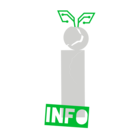Static:GSM
 |
There will be an ask us everything by the GSM Team on 29th 22:30 in the wikipaka dining room. See here for more information: https://cfp.verschwoerhaus.de/36c3/talk/BZTE77/ C3NAV: https://36c3.c3nav.de/l/c:0:388.97:454.64/ |
An experimental private 2G/GSM, 3G/UMTS, 4G/LTE network is provided via Osmocom and NextEPC during the Congress.
2G will be only available in a small area, the "glasshall". Due to interference mitigation we will not provide 3G in this area and no 2G in all other areas. Sorry for this inconvenience, but we don't have enough spectrum allocated to cover both.
It is set up by C3GSM. You can use the GSM and 3G networks to place calls or send SMSs for free to the GSM and DECT endpoints.
Data will be provided over 3G and 4G only.
Current data availability (your need to add/setup an APN with access point name "internet"):
- 2G/GSM: operational in Glasshall
- 3G/UMTS: operational (unstable)
- 4G/LTE: operational at GSM-Room
Contents
SIM card, registration
To be able to use the GSM network, you require a SIM card dedicated for the CCC event network.
Any SIM issued at any of the previous CCC events with a GSM network will automatically work. (There could be some problems if your phone you are using now has only 2G, when you used 3G on events before)
If you don't have a SIM from a previous event, you can obtain one from the POC (Phone Operation Center). There is only a very limited quantity available, so please only buy a new card if you don't have one from previous events.
Before you're about to obtain a SIM, make sure your phone supports our frequencies this year! See "Additional information" below.
After you have obtained a suitable SIM,
- Register/log-in on eventphone
- Register a new extension with phone type "GSM handset", due to decreased coverage of 2G during this event make sure to enable 3G. Give the system a couple of minutes to synchronize with our in-house GSM provider. Relax. Maybe have a nip of your favorite caffeinated beverage.
- Dial the GSM token shown in the details view of your extension. This step completes the registration process and pairs your device/SIM with the event's GSM network. If you ever feel like switching devices or SIM cards, then just redial this number on your new device.
Self Service USSD
- get your own extension: *#100#
- query 3G status: *#102#
- query extension: *#100#
- 3G on: *#301#
- 3G off: *#300#
- LTE on: *#401#
- LTE off: *#400#
Additional information
- 2G uses ARFCN 128 and 152 which are on the edges of the 850 MHz band we have this year.
- The 3G UARFCN is in the 850 Mhz band.
- The 4G EARFCN are in the 2600 MHz band (band 7)
- All frequencies are used under License of the German regulatory authority (BNetzA)
- You can re-use the GSM token you got when creating an extension with any SIM for this network.
- We are operating at output power permitted by our license for each technology.
- Currently there are $n 2G and $m 3G cells in use.
Support
- I can't call with my old phone: some very GSM only candy bar phone (such as the Nokia 3310) do not support the AMR voice codec which we required to operate the 3G network. You can still receive and send SMSs, but won't be able to make calls (until we add support voice transcoding)
- I can't find the 3G/UMTS network: we operate base station using frequencies in band 5. Verify if your phone support band 5.
- I would like to try the LTE network: the LTE network is still experimental, thus we used a different "operator name". Do a manual network search in your phone and select network 901 42 (instead of D/262 42). You don't need another SIM card. The LTE network is for data only. Voice and SMS are only supported on 2G/GSM and 3G/UMTS.
- My phone can't connect to the network, or is not allowed anymore: if you have an old SIM card (black, from 30c3), this can happen when you loose coverage. Reboot the phone to fix the issue.
Frequencies
List of ARFCNs:
- 129, 151
List of UARFCNs:
- 1007 (band V, 871.5/826.5 MHz)
List of EARFCNs:
- 21200
The LTE frequencies have been generously provided by Telefonica for this event.
Our GSM/UMTS spectrum is generally not used in Germany.
Technical Information
If you are interested in technical details you can drop by at the GSM Team next to the POC on day 1-4.
sysmoBTS hardware
We use sysmoBTS hardware as actual GSM BTS (Base Transceiver Station). The software on the sysmoBTS is the Free Software program OsmoBTS, developed under the Osmocom umbrella. OsmoBTS implements the GSM protocol layer 2 and interfaces towards the backend, OpenBSC using the A-bis over IP protocol in a dedicated VLAN of the switched Camp ethernet backbone.
The Backend: Osmocom and NextEPC
you can find detailed Information about the software infrastructure
- for 2G/3G in the osmocom wiki
- for 4G at NextEPC
Slides
The LTE network setup has been described in more details in presentation at this year's chaos communication camp, where it has been deployed the first time. You can find the slides here.
The slides describing the overall network operation meant for the infrastructure review are available here.
